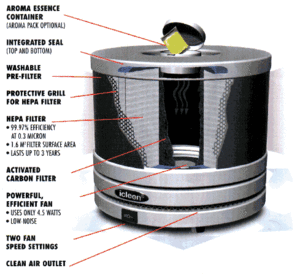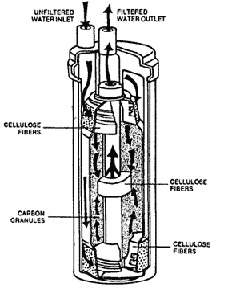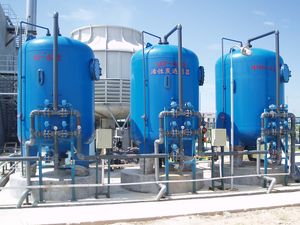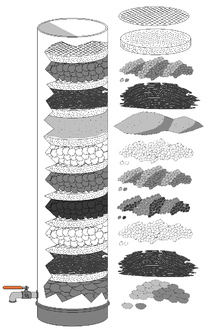Active Carbon Filters
Active Carbon filtering is a method of filtering that uses a piece of activated carbon to remove contaminants and impurities, utilizing chemical adsorption. Each piece of carbon is designed to provide a large section of surface area, in order to allow contaminants the most possible exposure to the filter media. One pound (450 g) of activated carbon contains a surface area of approximately 100 acres (40 Hectares). This carbon is generally activated with a positive charge and is designed to attract negatively charged water contaminants. Carbon filtering is commonly used for water purification, but is also used in air purifiers. Carbon filters are most effective at removing chlorine, sediment, and volatile organic compounds (VOCs) from water. They are not effective at removing minerals, salts, and dissolved inorganic compounds. Typical particle sizes that can be removed by carbon filters range from 0.5 to 50 micrometres. The particle size will be used as part of the filter description. The efficacy of a carbon filter is also based upon the flow rate regulation. When the water is allowed to flow through the filter at a slower rate, the contaminants are exposed to the filter media for a longer amount of time.
Types of carbon filters
There are two predominant types of carbon filters used in the filtration industry: powdered block filters and granular activated filters. In general, carbon block filters are more effective at removing a larger number of contaminants, based upon the increased surface area of carbon. Many carbon filters also use secondary media, such as silver or KDF-55, to prevent bacteria growth within the filter.
History of carbon filters
Carbon filters have been used for several hundred years and are considered one of the oldest means of water purification. Historians have shown evidence that carbon filtration may have been used in ancient Egyptian cultures for both air and water sanitization 2000 B.C. Sanskrit text refers to filtering water through charcoal (1905 translation of "Sushruta Samhita" by Francis Evelyn Place). The first modern use of a carbon filter to purify potable water occurred in 1862. Carbon filtration was further advanced in the mid-1970s by H. Allen Rice and Alvin E. Rice when they first manufactured a porous carbon block for drinking water use. Currently, carbon filters are used in individual homes as point-of-use water filters, groundwater remediation and, occasionally, in municipal water treatment facilities. They are also used as pre-treatment devices for reverse osmosis systems and as specialized filters designed to remove chlorine-resistant cysts, such as giardia and cryptosporidium.
Hydrogen production
For small-scale production of hydrogen water purifiers are installed to prevent formation of minerals on the surface of the electrodes and to remove organics and chlorine from utility water. First the water passes through a 20 micrometer interference (mesh or screen filter) filter to remove sand and dust particles, second, a charcoal filter (activated carbon) to remove organics and chlorine, third stage, a de-ionizing filter to remove metallic ions. A test can be done before and after the filter for proper functioning on barium, calcium, potassium, magnesium, sodium and silicon.
Radiation or nuclear medicine
Carbon filters, along with HEPA filters, are widely used in the construction of hot cells. This allows the room to exhaust air that contains infinitesimal quantities of radioactivity and contaminants.
Video



